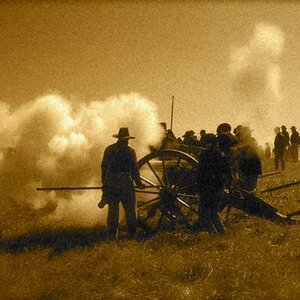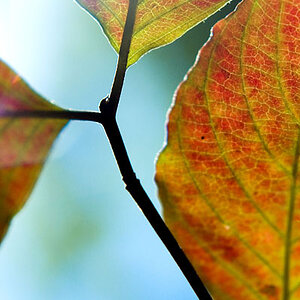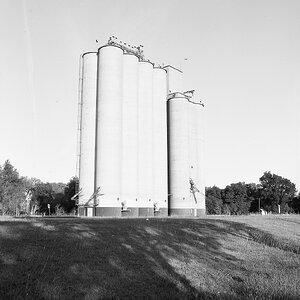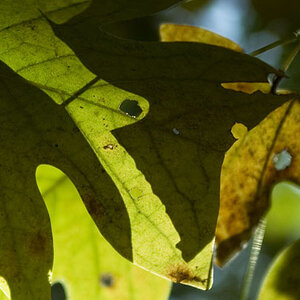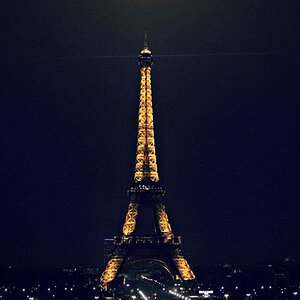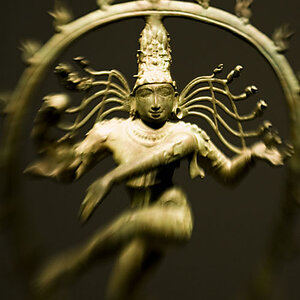superhornet59
TPF Noob!
Hey everyone, im realy into photography, and im more into the digital side. Im gonna be getting a D70 soon, and when i make some money a D200. anyhow i had this great idea, i want to make a year long exposure.
from my quick reseach seems like id be the first (though someone is working on a hundred year exposure). Anyway whats the lowest ISO film i can get (adigital camera obviously wont run for a year so im gonna need a film camera with a T-setting). with minumum ISO and 32 aperature (ill figure out the aperature later, i dont have time for math right now ) well anyway my idea is fairly simple,
) well anyway my idea is fairly simple,
find a good tree somewhere nice, (optimum idea would be a lone tree on top of a hill where theres more hills behind it to capture the background, or to avoid desractions at the same time do one thats alone without backrgound) and then leave it to expose for a year. by the way this would be up hear in canada a litle outside toronto. the plan is it would be able to catch the leaves as they chance colour and disapear, the snow, green grass, fallen bown leaves, all that in a single exposure, and it might turn out to give a great effect.
so ya i want to jam the seasons into one, ive got some things figured out like id go far from the city so that the stars are more clearly visible, id point it north/ south to avoid the sun from making a huge streak, ect ect.
so assuming i can go down to F32 aperature, and keep the sun out, what kind of ISO film would i need to keep a year long exposure? also im guessing id need some kind of fan to blow possible snow and dust off the camera, some hood to protect from rain, obviously a good lens hood weill do though, but stuff will acumulate. so those little aspects ive got covered, i just want to get the right ISO so i dont screw it up through under/over exposure. oh and id love to get my hands some huge imax film type carrying camera in order to realy catch as much as i can. with low iso and a REALY big piece of film, i can catch amazing detail. pretty simply i want to try on my own version of the Gigapxl project combined with exremely long exposure and low iso, which would give amazing detail and low noise (if it werent for motion blur).
so yes, after all that can you tell me what ISO film i would need, and if im gonna do it regular sized then okay ill use an SLR, or if i can get custom low iso large film to use in my own built camera. thanks -Matt
from my quick reseach seems like id be the first (though someone is working on a hundred year exposure). Anyway whats the lowest ISO film i can get (adigital camera obviously wont run for a year so im gonna need a film camera with a T-setting). with minumum ISO and 32 aperature (ill figure out the aperature later, i dont have time for math right now
find a good tree somewhere nice, (optimum idea would be a lone tree on top of a hill where theres more hills behind it to capture the background, or to avoid desractions at the same time do one thats alone without backrgound) and then leave it to expose for a year. by the way this would be up hear in canada a litle outside toronto. the plan is it would be able to catch the leaves as they chance colour and disapear, the snow, green grass, fallen bown leaves, all that in a single exposure, and it might turn out to give a great effect.
so ya i want to jam the seasons into one, ive got some things figured out like id go far from the city so that the stars are more clearly visible, id point it north/ south to avoid the sun from making a huge streak, ect ect.
so assuming i can go down to F32 aperature, and keep the sun out, what kind of ISO film would i need to keep a year long exposure? also im guessing id need some kind of fan to blow possible snow and dust off the camera, some hood to protect from rain, obviously a good lens hood weill do though, but stuff will acumulate. so those little aspects ive got covered, i just want to get the right ISO so i dont screw it up through under/over exposure. oh and id love to get my hands some huge imax film type carrying camera in order to realy catch as much as i can. with low iso and a REALY big piece of film, i can catch amazing detail. pretty simply i want to try on my own version of the Gigapxl project combined with exremely long exposure and low iso, which would give amazing detail and low noise (if it werent for motion blur).
so yes, after all that can you tell me what ISO film i would need, and if im gonna do it regular sized then okay ill use an SLR, or if i can get custom low iso large film to use in my own built camera. thanks -Matt


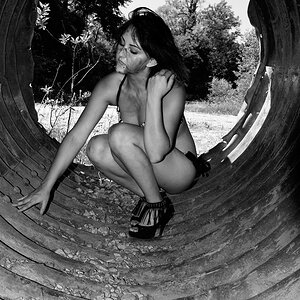
![[No title]](/data/xfmg/thumbnail/31/31702-59b5519e3c9a12b85ca69439a27f5253.jpg?1619734961)
![[No title]](/data/xfmg/thumbnail/33/33447-c3f5563c9b8b1f19498a3062f60f92b1.jpg?1619735973)
![[No title]](/data/xfmg/thumbnail/31/31704-42c2fcbcc4b6ba8c2c5ae54202cad6ec.jpg?1619734963)
